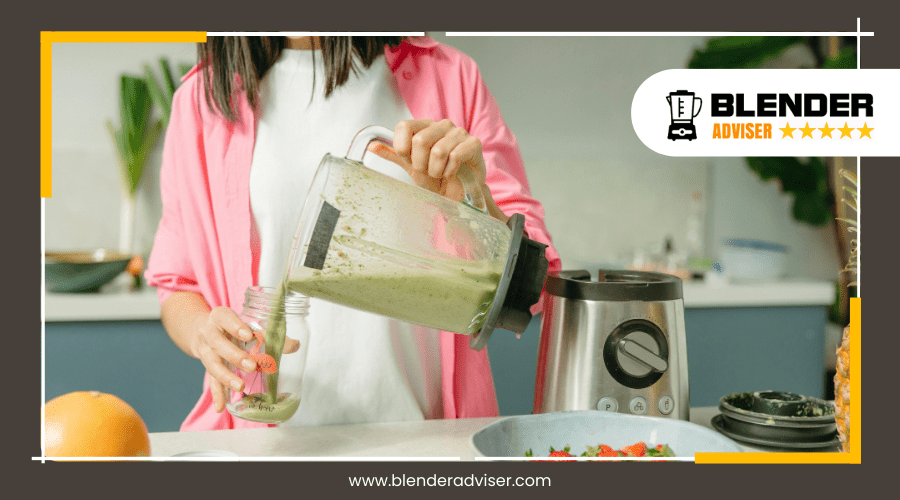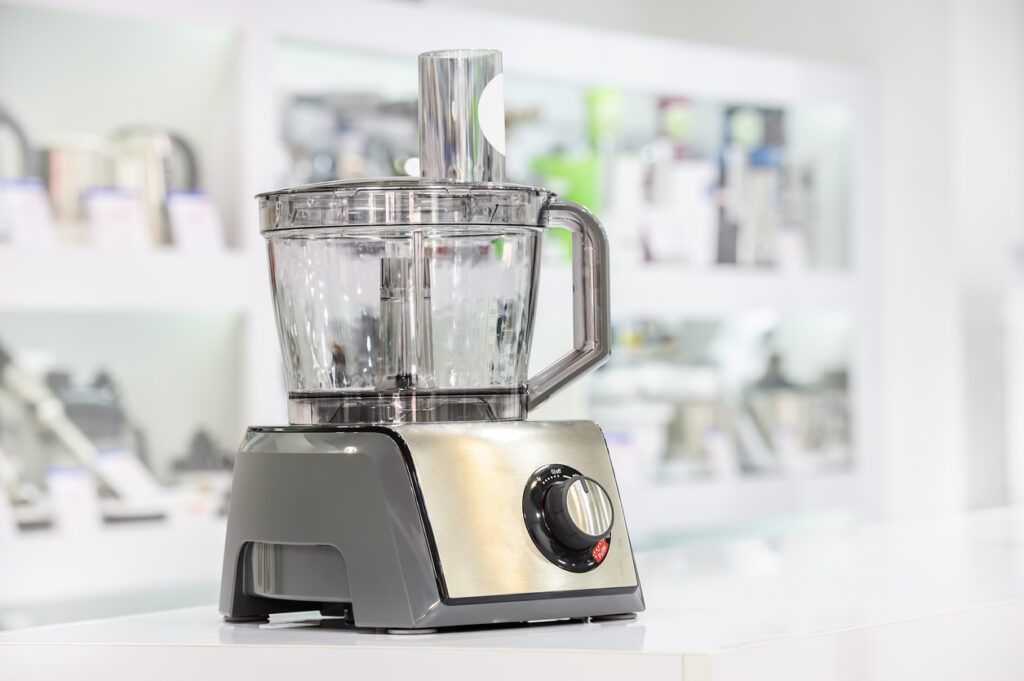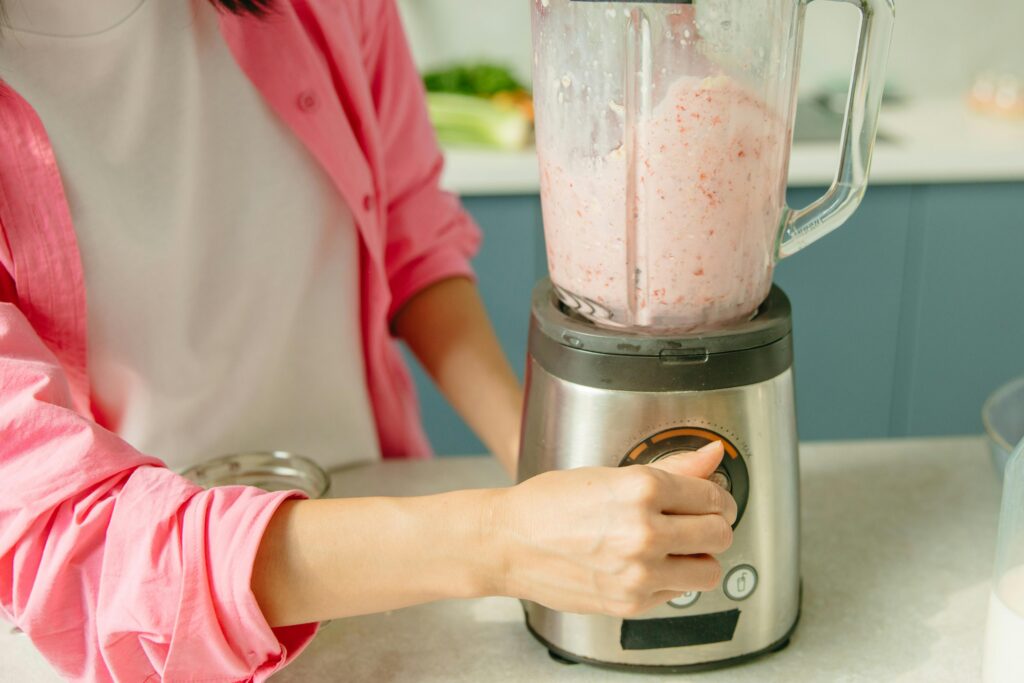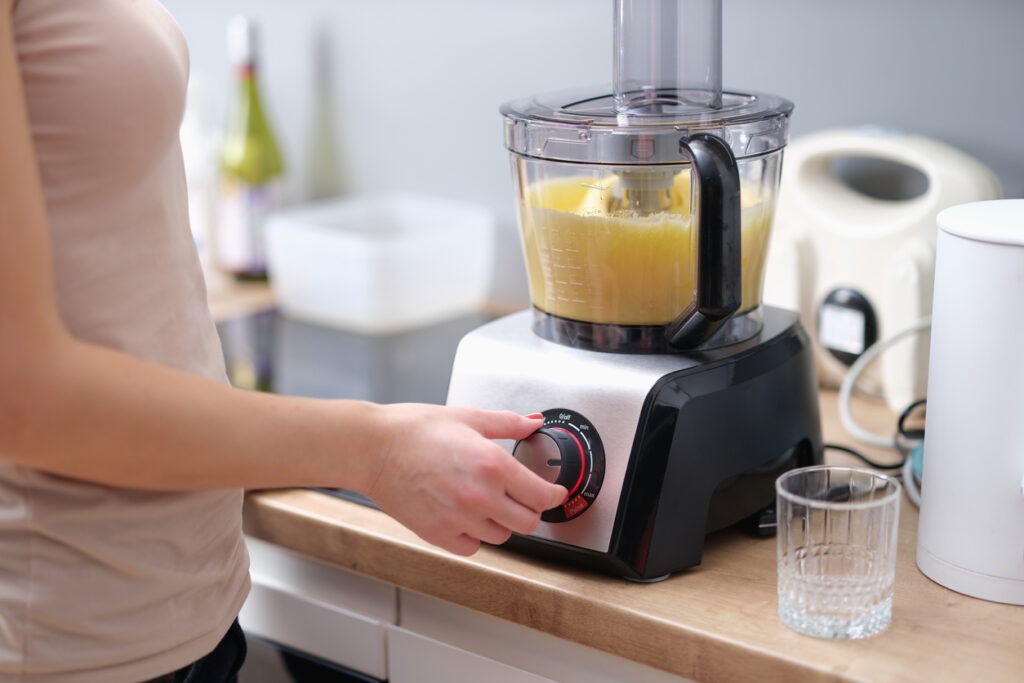In the culinary world, asking if you can use your blender as a food processor is akin to wondering if a Swiss Army knife can replace a chef’s knife. Each tool has its forte, with blenders being the masters of smooth concoctions and food processors handling more solid tasks with finesse.
You might find yourself pondering whether your kitchen counter has room for both or if one can indeed perform the dual roles. This curiosity might lead you to explore the boundaries of your blender’s capabilities and whether it can step into the shoes of a food processor, even if just partially.
Blender Vs. Food Processor
Understanding the key differences between a blender and a food processor can significantly impact your cooking efficiency and outcomes. When you’re eyeing that creamy smoothie or a batch of fresh soup, a blender is your go-to appliance. It’s designed to handle liquids, creating a vortex with its sharp blades to ensure smooth results.
However, if you’re looking to slice vegetables, grate cheese, or mix cake batters, you’re entering food processor territory.
The blender vs. food processor debate really boils down to the nature of your ingredients and the desired outcome. Blenders require liquid to function properly, making them less than ideal for tasks that involve dry ingredients. On the other hand, food processors come equipped with slicing and grating attachments that excel at handling solid foods. They’ve blades set at different heights, enabling them to perform a variety of tasks such as whipping cream, grinding meat, and even mixing doughs—feats a blender simply can’t achieve.
How Blenders Work
You might be curious about what sets your blender apart when considering it as an alternative to a food processor. Let’s explore how the blending mechanism’s fundamentals, along with the speed and power, influence its efficiency in pulverizing ingredients. Understanding these aspects will help you gauge whether your blender can meet your culinary needs beyond just making smoothies.
Blending Mechanism Fundamentals
Blenders create a powerful vortex with their sharp blades to efficiently blend your ingredients into a smooth consistency. This vortex motion is crucial in breaking down everything from fruits to vegetables, ensuring you get that perfect smooth texture every time.
Designed primarily for liquids, blenders shine when you’re making smoothies, soups, sauces, or purees. The high-speed rotation of the blades chops and blends ingredients effectively, but there’s a catch. You’ll need to add a bit of liquid to get things moving smoothly. Without it, you’re likely to find your blender struggling to perform its magic.
Speed and Power Comparison
After exploring the blending mechanism fundamentals, let’s focus on how the speed and power of blenders compare to their function. Blenders, with their high-speed motors and sharp blades, are true powerhouses in the kitchen. Here’s how their power and speed make a difference:
- Blenders create a vortex to efficiently break down ingredients, making your smoothies perfectly smooth.
- The high-speed motor allows for quick and easy blending of liquids and soft ingredients, saving you time.
- Powerful blades can pulverize almost anything in seconds, offering you instant gratification.
- Despite their strength, blenders lack the ability to perform tasks like slicing or kneading, highlighting their specialized role.
Blenders’ power and speed are tailored for specific tasks, ensuring you get the best results where they shine.
Ideal Blender Uses
When looking to achieve silky smooth textures in your culinary creations, a blender is your go-to kitchen appliance. Its design and functionality make it perfect for blending a variety of ingredients into a seamless concoction. Whether you’re whipping up smoothies, soups, sauces, or purees, adding the right amount of liquid is key to ensuring everything blends smoothly. This is where your blender shines, transforming solid ingredients into perfectly smooth textures with ease.
Blenders aren’t just about achieving that silky smooth consistency; they’re also masters at crushing ice. If you’re aiming to make chilled beverages or need finely crushed ice for recipes, your blender’s got you covered. The powerful blades are designed to tackle ice effectively, ensuring your drinks are refreshingly cold with a smooth texture.
Moreover, the glass jars in blenders are a boon for anyone looking to blend hot ingredients. Unlike other materials, glass can handle the heat without any risk of damage, making it safe for you to blend warm soups or sauces directly in the jar. Plus, the tall design of blender jars isn’t just for aesthetics; it makes pouring out your silky smooth creations a breeze, ensuring a mess-free transfer to your serving dish or glass.
Food Processor Functions
Food processors are versatile tools that handle a wide array of tasks, from mixing cake batters to slicing vegetables, making them indispensable in your kitchen. Unlike a blender, which is ideal for blending liquids and soft foods, food processors can tackle tougher jobs that require more precision and power.
Here’s why you’ll find yourself reaching for your food processor for a variety of kitchen tasks:
- Mixing and Kneading: Whether it’s a delicate cake batter or a firm dough, food processors have the power to mix ingredients thoroughly and knead doughs to the perfect consistency.
- Slicing and Dicing: Equipped with sharp, efficient slicing blades, food processors can quickly and evenly slice through large quantities of vegetables, saving you time and effort.
- Grating with Ease: Forget about manually grating cheese or chocolate. Food processors come with grater attachments designed to grate ingredients swiftly and effortlessly.
- Grinding and Crumbing: From grinding meat for homemade sausages to making breadcrumbs for your recipes, the versatility of food processors extends to tasks that would otherwise be labor-intensive.
In short, food processors are the workhhorses of the kitchen, capable of handling tasks beyond what a standard blender can achieve.
Blender as Processor Feasibility
You might wonder if your blender can double as a food processor, but there are critical limitations to consider. While a blender is better for liquid-based tasks like making smoothies, it cannot match the versatility of food processors in slicing, shredding, and kneading. The need for liquid to operate effectively means blenders cannot handle the range of tasks that food processors excel at without resulting in uneven textures or incomplete processing.
| Feature | Blender | Food Processor |
|---|---|---|
| Liquid Requirement | Yes | No |
| Task Variety | Limited | Wide |
| Specialized Attachments | No | Yes |
Understanding the differences between food processors and blenders highlights why blenders cannot effectively replace food processors. Without the specialized blades and attachments that make food processors versatile, blenders fall short in performing a broad spectrum of food preparation tasks. Despite the overlap in some functions, the unique capabilities of food processors and blenders mean that one cannot simply substitute for the other without compromises. So, when considering blenders and food processors, it’s essential to acknowledge their distinct roles in the kitchen to avoid disappointment in the results.
Substitutes and Alternatives
Now that you’re considering whether your blender can take on food processor tasks, let’s explore how they stack up against each other and some practical tips for using your blender in new ways.
You’ll find that understanding the functions where a blender and a food processor differ is key to adapting your approach in the kitchen. This knowledge won’t only broaden your culinary skills but also ensure you’re using the right tool for the job, every time.
Blender Vs. Processor Functions
Understanding the distinct functions of blenders and food processors can help you decide which appliance best suits your culinary needs. While you might ponder, ‘Can a Blender Be Used as a Food Processor?’, it’s crucial to recognize their unique roles.
- Blenders excel at creating smooth liquids like smoothies and soups, focusing on liquidizing over chopping.
- Food processors offer versatility with blades and discs designed for slicing, dicing, and even dough making, covering a broader spectrum of food prep tasks.
- The absence of slicing or shredding capabilities in blenders marks a clear distinction.
- Opting for a hybrid blender with a Food Processor Attachment could be a savvy compromise, blending the best of both worlds in one appliance.
Tips for Blender Use
If you’re grappling with the limitations of your blender, exploring substitutes and alternatives can expand your culinary toolkit significantly. Here’s a quick guide to help you navigate when to USE A BLENDER and when to opt for an alternative INSTEAD OF A FOOD processor or blender for specific tasks.
| Blender: Whats | Alternative Tool | Use Case |
|---|---|---|
| Pureeing | Food Mill | Applesauce, mashing soft foods |
| Chopping | Food Chopper | Chopping vegetables, nuts |
| Mixing/Whipping | Hand Mixer | Stirring, mixing batter |
| Grinding | Grinder | Grinding meats, spices |
This table showcases how different tools can be used in place of a blender or food processor, providing you with the flexibility to tackle a variety of culinary challenges.
Making the Decision
Given the distinct operational differences, deciding whether to use a blender or a food processor depends on your specific cooking tasks. Understanding these differences can help you make the right choice. Here are four key points to consider:
- Blenders need liquid: Unlike food processors, blenders can’t efficiently handle solid ingredients without the addition of some liquid. This is crucial for tasks like making smoothies or liquid-based sauces.
- Food processors handle solids: Designed for solid ingredients, food processors usually come into their own when you need to chop, slice, or dice without added liquid. This makes them ideal for more textured dishes.
- Lack of versatility in blenders: While both appliances can perform some of the same tasks, blenders lack the slicing and shredding capabilities that processors are best known for. This limits their use in more complex food preparation.
- Understanding your needs: Before choosing between a blender or food processor, consider what you’re most likely to use it for. If your cooking leans more towards soups, smoothies, or sauces, a blender may suffice. However, for more solid food preparation, a food processor is likely the better choice.
Conclusion
In summary, while your blender can tackle some tasks typically reserved for a food processor, it’s not a perfect substitute. Blenders excel at creating smooth, liquid-based concoctions, whereas food processors are champions of slicing, dicing, and handling solid foods with ease.
For occasional overlaps, a high-speed blender with specific attachments might do the trick. However, for truly versatile kitchen capabilities, having both appliances at your disposal is your best bet. So, weigh your cooking needs carefully before making a decision.






